This website uses cookies
This website uses cookies to enable it to function properly and to analyse how the website is used. Please click 'Close' to accept and continue using the website.


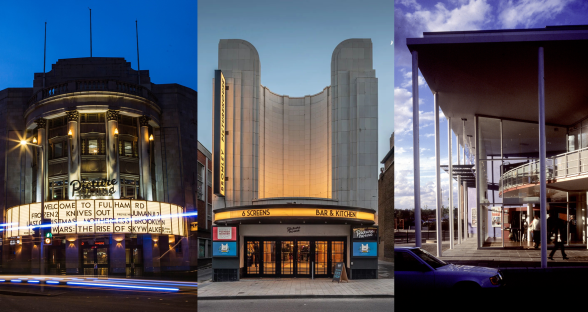
Picturehouse has announced the closure of three historic London cinemas within the space of a month, citing ‘increasing operational costs and declining admissions’. The arthouse Picturehouse brand is part of the Cineworld group, which reportedly plans to close approximately a quarter of its cinemas in the UK as part of a new restructuring move. The Stratford East branch will close on July 28, followed by Bromley on August 1st, while Fulham Road closed on July 11th.
The news places the buildings at risk of potential loss or redevelopment, unless new operators or community consortiums can be found to take over the running of the cinemas. While the Fulham and Bromley branches date from the Interwar period (1930 and 26 respectively) – the so called ‘Golden age of Cinema architecture’ – the branch at Stratford East is from the very end of the 20th century (1996-97), at a time when out-of-town multiplexes were the predominant cinema typology, and new purpose-built urban cinemas were rare.
C20 Society is joining the Cinema Theatre Association in backing the grassroots campaigns springing up to save these much valued local amenities, while our Casework teams explore the possibility of listing applications or formal objections to any potential loss.
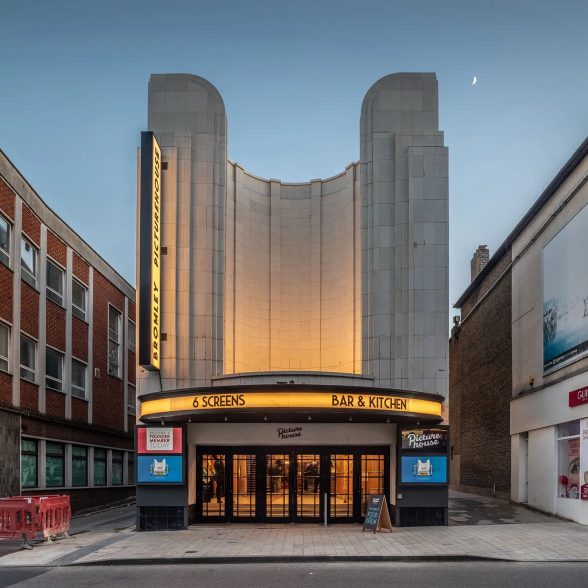
Image credit: Philip Butler (X: @Artdecomagpie)
London Borough of Bromley
George Coles, 1936
Designed by George Coles (1884-1963) – one the most famous and prolific cinema architects of the age – Bromley’s Oscar Deutsch Odeon Theatre was opened in 1936, and is one of several Coles classics in the London suburbs, including Troxy in Stepney (1933), the Gaumont State Cinema in Kilburn (1937) and the Odeon, Muswell Hill (1936), all of which are Grade II* listed.
It has subsequently been run by Empire Cinemas, Cineworld and, since 2019, Picturehouse, remaining in continuous use as a cinema for nearly 90 years.
The building underwent an extensive £4.5 million renovation programme as recently as 2018-19, being shortlisted for an AJ Retrofit Award. Led by Earle Architects, this modernised the 5 cinema screens while retaining all surviving original features, enhancing the bar / restaurant facilitates, removing asbestos, and adding a steel framed extension on the roof to accommodate a 6th screen. The faience facade had also fallen into disrepair and lost the tops of the two projecting streamlined fins, which were faithfully recreated as part of the refurbishment.
In a project brochure, Earle Architects stated: ‘Our clients [Picturehouse] have asked us to seek listed building status from Historic England for this unique building to preserve the site for future generations’. It is as yet unknown if a listing application or assessment was made at the time.
In response to the news of its imminent closure, a ‘Save Bromley Picturehouse’ campaign has rapidly organised, hosting a town hall meeting and attracting the support of local councillors, with a petition receiving nearly 8,000 signatures within a few weeks. It is hoped a new operator or community consortium may be able to safeguard the future of the cinema.
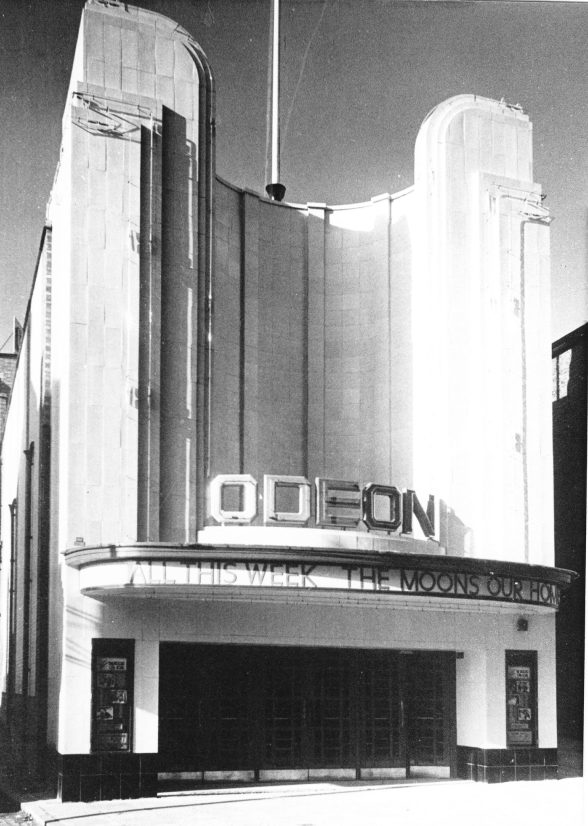
Image credit: dusashenka (Flickr)
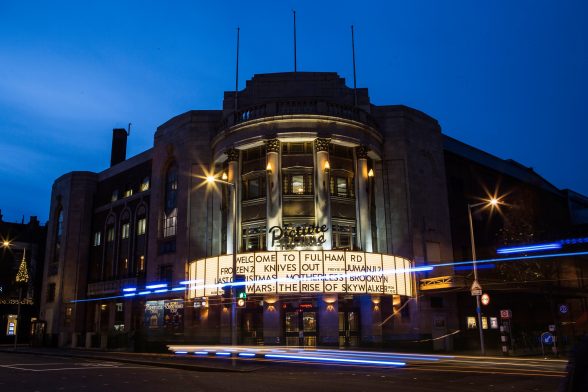
Royal Borough of Kensington and Chelsea
John Stanley Coombe Beard, 1930
Following of the closure of the cinema on July 11th, the building’s owners – St Martin’s Properties – are now considering their options for the site and have requested a COI (Certificate of Immunity from Listing). C20 Society has responded to this, recommending to Historic England that the building should be listed at Grade II. Given the prime location, it is anticipated that a full redevelopment scheme is highly likely, pending the outcome of the COI request.
The building’s principal elevation survives very well, retaining its original 1930s character overall. Its frontage is high quality and designed to impress in its scale and classical detailing. These exteriors are clearly of high architectural significance.
While the building’s interiors have been subdivided and altered over the years, as is to be expected of a cinema building of this age which has been in continuous occupation, the entrance foyer survives in its original configuration and remains a key space within the plan. The original curved corridor that served the cinema’s balcony also remains. As picked up in the report, original fixtures remain in places and it is possible 1930s finishes survive beneath later coverings (a fragment of the proscenium arch survives in screen 3, for instance). There are interwar cinemas in similar condition internally which have been listed.
The building is also located within The Boltons Conservation Area and is noted in its Appraisal. Overall, it is the Society’s view that the former Fulham Forum is an important interwar cinema of high architectural quality which we feel meets the criteria for listing.
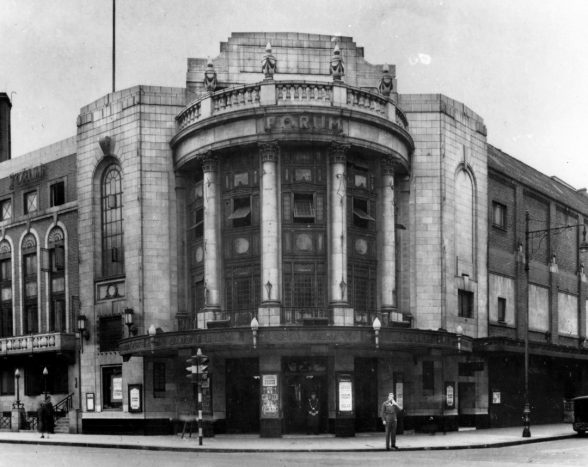
Image credit: Fulham Road Picturehouse
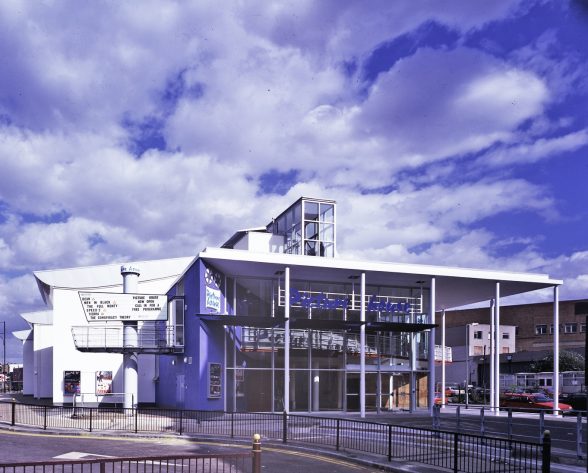
Image credit: Burrell Foley Fischer
London Borough of Newham
Burrell Foley Fischer Architects, 1996-97
Designed by architects Burrell Foley Fischer – renowned for their work on cinemas both new and historic – the Picturehouse at Stratford East was set within a new public square and cultural quarter, adjacent to the Grade II* Victorian Theatre Royal. Developed with public funding from Stratford’s City Challenge, it contains a four-screen cinema with exhibition space, café bar and restaurant facilities. Unusually the building is visible from all sides, with the entrance facade deliberately open and inviting, allowing passers-by to read the facilities within. Of particular note is its innovative tubular open-plan projection booth, running like a spine along the length of the building and allowing projectionists total access to the equipment serving all four screens. Winning several design awards upon completion, it is a fine example of a late 20th century urban cinema, from a period when the out-of-town multiplex was the predominant cinema typology.
The project was an FPDC National Winner for Leisure, and voted as one of the best 50 buildings of 2000 by The Independent. It was shortlisted for the 1997 RIBA Award for Architecture, received a Civic Trust Commendation, and won the National Drywall Award for innovative use of materials.
“While the rest of Britain goes crazy for the bland multiplex, east London is now home to two picture houses which are also architectural masterpieces…The overwhelming sensation is one of optimism triumphing over dreary town planning”
— The Independent
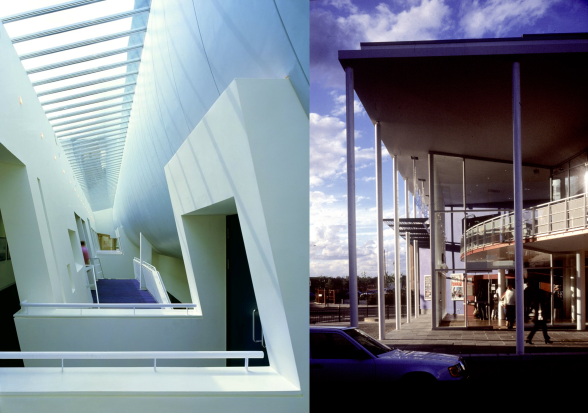
Image credit: Burrell Foley Fischer

Become a C20 member today and help save our modern design heritage.